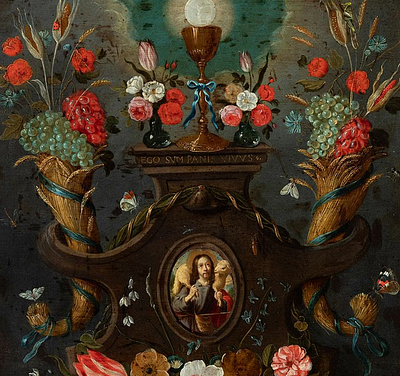Cordovan school; late 17th century. "Flight into Egypt". Oil on canvas. Re-retouched.
Lot 32
About Seller
Setdart Auction House
Carrer Aragó 346
Barcelona
Spain
Setdart Subastas was born in 2004 and is currently the first online art auction in Spain with solidity, prestige and reliability guaranteed by our more than 60,000 users. Setdart has a young, dynamic and enterprising team ready to successfully manage the purchase and sale of art works through custom...Read more
Estimate:
EUR€1,500 - EUR€2,000
$1,530.61 - $2,040.82
Absentee vs Live bid
Two ways to bid:
- Leave a max absentee bid and the platform will bid on your behalf up to your maximum bid during the live auction.
- Bid live during the auction and your bids will be submitted real-time to the auctioneer.
Bid Increments
| Price | Bid Increment |
|---|---|
| EUR€0 | EUR€10 |
| EUR€200 | EUR€25 |
| EUR€500 | EUR€50 |
| EUR€1,000 | EUR€100 |
| EUR€3,000 | EUR€200 |
| EUR€5,000 | EUR€500 |
| EUR€10,000 | EUR€1,000 |
| EUR€20,000 | EUR€2,000 |
| EUR€50,000 | EUR€5,000 |
About Auction
By Setdart Auction House
Sep 21, 2021
Set Reminder
2021-09-21 10:00:00
2021-09-21 10:00:00
America/New_York
Bidsquare
Bidsquare : 21st September - ARAS JÁUREGUI Private Collection - Old Masters, 19th & 20th Century
https://www.bidsquare.com/auctions/setdart-auction-house/21st-september---aras-j-uregui-private-collection---old-masters-19th-20th-century-7429
Setdart Auction House sofia@setdart.com
Setdart Auction House sofia@setdart.com
- Lot Description
Cordovan school; late 17th century. "Flight into Egypt". Oil on canvas. Re-retouched. It presents erased inscriptions on the back and repainting. Measurements: 35,5 x 45,5 cm. The flight to Egypt is an episode of the Gospel of Matthew very treated in the art, frequently used to identify the Holy Family with those disadvantaged by the emigration and the political repression. The very brief New Testament account tells how an angel appears in a dream to St Joseph and tells him that he must flee to Egypt with Mary and the child, because King Herod was looking for him to kill him. Joseph obeys, and after a while he is ordered to return, in a similar manner. The evangelist himself sees in the episode the fulfilment of an Old Testament prophecy: "out of Egypt I called my son" (Hosea 11:1). In the apocryphal Gospels and in later Christian tradition, this episode will be expanded with a multitude of anecdotes and miracles that occur during the journey, among which we find the rest during the flight to Egypt, an obligatory pause for the Virgin to suckle the Child. In this particular case, the author has depicted the scene narrated in the apocryphal Gospels, as the Virgin Mary can be seen holding the Child to her breast. Both figures are located in the centre of the scene, in an elevated position with respect to the rest of the figures, due to the fact that they are mounted on a colt. The image is completed by the figure of two angels who seem to be guiding the way, and to the left of the Child and the Virgin, Saint Joseph, standing, holding the donkey. Both the representation of the ideal of the family presented in this work, together with the contrasting tones used in the scene, place the work in the Baroque period. The 17th century marked the arrival of the Baroque in the Andalusian school, with the triumph of naturalism over Mannerist idealism, a loose style and many other aesthetic liberties. At this time the school reached its greatest splendour, both in terms of the quality of its works and the primordial status of Sevillian Baroque painting. Thus, during the transition to the Baroque period, we find Juan del Castillo, Antonio Mohedano and Francisco Herrera el Viejo, whose works already display the rapid brushstrokes and crude realism of the style, and Juan de Roelas, who introduced Venetian colourism. The middle of the century saw the fullness of the period, with figures such as Zurbarán, a young Alonso Cano and Velázquez. Finally, in the last third of the century we find Murillo and Valdés Leal, founders in 1660 of an Academy where many of the painters active during the first quarter of the 18th century were trained, such as Meneses Osorio, Sebastián Gómez, Lucas Valdés and others.
- Shipping Info
-
In-house shipping available. Please inquire at admin@setdart.com.
-
- Buyer's Premium



 EUR
EUR CAD
CAD AUD
AUD GBP
GBP MXN
MXN HKD
HKD CNY
CNY MYR
MYR SEK
SEK SGD
SGD CHF
CHF THB
THB














